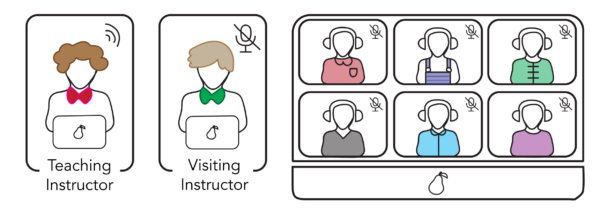The benefits of classroom visits (and how to make them effective)
By Tommaso Magrini, PhD student, Departement of Materials

It requires effort, time and theoretical preparation to be truly able to deliver a good lecture, to properly plan a class, or to assess the performance of your students. As I am writing this document, I am still in this process of learning. Nevertheless, the more I am involved in teaching, the more I can experiment with new techniques or approaches, keeping the structures that worked, adjusting those that didn’t. One technique I plan to keep is classroom visits with peers.
Over the course of my doctoral studies I enrolled in the program “Learning to Teach”. One of the most interesting things I have learnt is the concept “learning by doing”. Not only is “learning by doing” more fun and engaging for the students, but it has also been proven to be the best ally for the lecturers to reach their learning objectives. Step by step, I introduced different activities in my classes, ranging from simple short discussions to more advanced posters and presentations. Those activities not only proved to be a good way to keep the students focused and active, but were also be extremely useful for us as teachers to assess if the concepts our class has been built on, are solid and stable in the students’ minds, or if they need repetition or consolidation. To understand whether the activities I have planned are meaningful and well aligned with the learning objectives, I have asked for peers to visit my classes, sit in and provide me with feedback.
Over the last semester I started implementing a new activity at the end of each lecture. Expecting my students to build on the concepts seen in my class and restructure them into a broader and more applied context, I proposed the following activity: divided in groups the students would need to come up with a shared idea, describe it schematically on a poster and then pitch it in front of the class. This would then foster a discussion between ‘critical friends’, that would openly challenge each group’s idea, with the goal of improving it and helping its realization. The classroom visit proved to be crucial in this phase.
As a lecturer, during such vivid and intense scientific discussions, I have to occupy several roles at the same time. Indeed, not only I have to moderate the discussion, but I also have to evaluate how deep and relevant the discussion is, while I assess whether the students have reached the milestones and the key learning objectives or not. For this reason, the presence of my colleague, that sits ‘outside the discussion’ and evaluates the classroom response to the activity is extremely important. If at the beginning he would observe only, at later stages we were also able to switch roles and evaluate the class activity in turns. Being able not only to take part in the discussion but also to observe it from outside and take notes gave me a more complete vision of the activity.
At the end of each class, I would always have a debriefing with my colleague. Its goal was to sum up the positive and negative aspects of the lecture in a constructive and unbiased way. These debriefings helped to correct the weak parts of the lecture and expand the positive ones. It was clear from the first time on, that the students were responding to the activity we planned with a positive attitude and with enthusiasm. Furthermore, through the classroom visits, we realized that we could more efficiently assess the classroom knowledge by using ‘exam-like questions’ during the discussion.
As a matter of fact, the ‘simple’ classroom visits have evolved, in our experience, into an open ideas exchange, built on honest and constructive feedback, that would help me improving my teaching style, the structure of my classes and the realization of more targeted and better structured learning activities.

